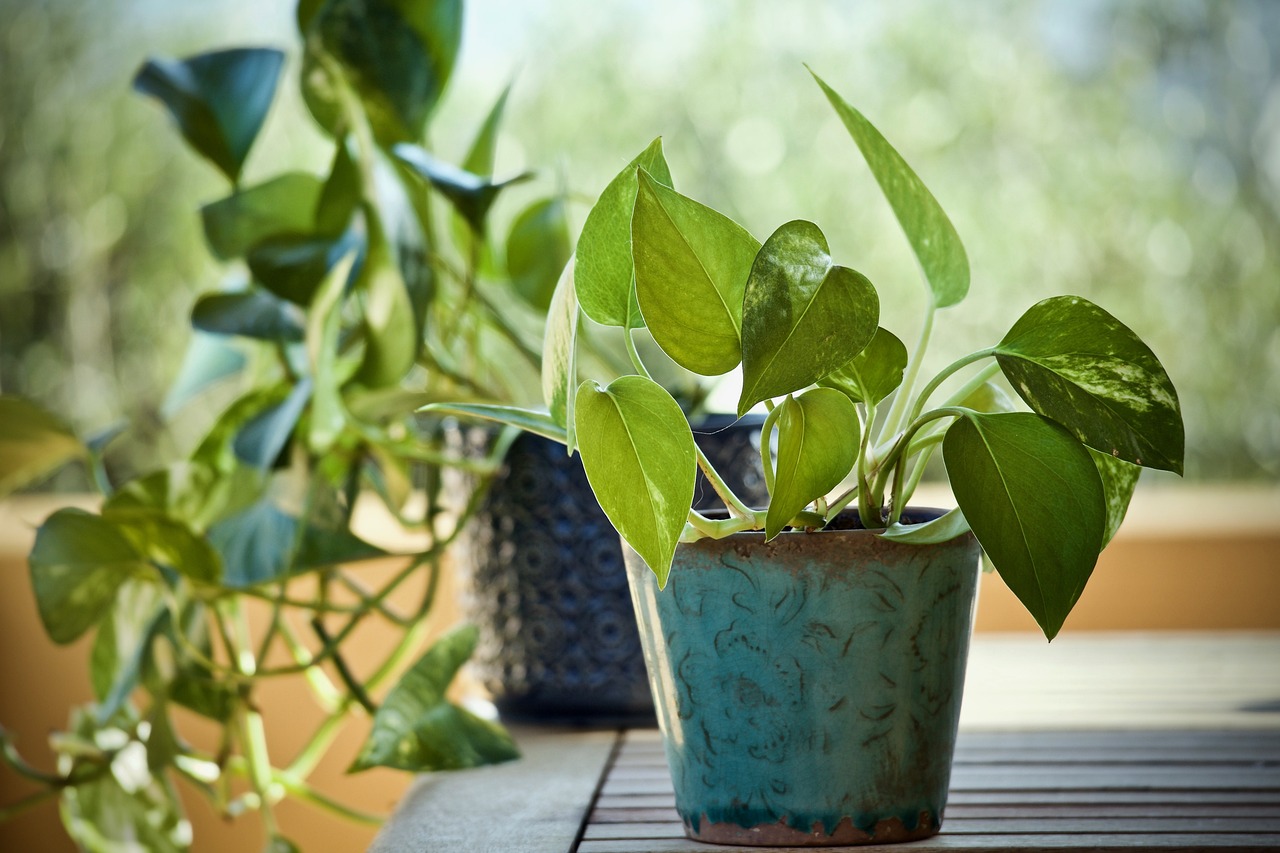Pothos, also known as Devil’s Ivy, is a popular houseplant admired for its attractive, heart-shaped leaves and ease of care. Native to the Solomon Islands, this versatile plant thrives in a variety of conditions, making it a favorite among both novice and experienced gardeners. Whether you’re looking to brighten up your living space or add a touch of greenery to your office, Pothos is an excellent choice. This article will guide you through ten essential care tips to ensure your Pothos plant remains healthy and vibrant.
1. Choosing the Right Location
Pothos plants are adaptable and can thrive in a range of lighting conditions. However, they prefer bright, indirect light. Place your Pothos near a window with filtered sunlight for optimal growth. Avoid direct sunlight, as it can scorch the leaves and cause discoloration.
If your home has low light conditions, don’t worry. Pothos can also survive in lower light, although growth may be slower and the leaves less variegated. Just be sure to avoid placing them in complete darkness or very dim areas, as this can lead to poor health and leggy growth.
2. Watering Your Pothos
One of the most common mistakes in Pothos care is overwatering. These plants prefer to dry out between waterings. A good rule of thumb is to water when the top inch of soil feels dry to the touch. Overwatering can lead to root rot, a serious condition that can kill your plant.
Conversely, underwatering can cause the leaves to wilt and turn brown at the edges. Consistency is key. Make sure to use a pot with drainage holes to prevent excess water from sitting at the bottom and causing root rot.
3. Soil Requirements
Pothos plants are not particularly fussy about soil. A well-draining potting mix is ideal for these plants. You can use a standard houseplant soil mix or create your own by combining equal parts of peat moss, perlite, and vermiculite. This blend ensures that the roots receive enough air and moisture without becoming waterlogged.
Additionally, you can add some orchid bark or sand to the mix to further improve drainage. Avoid using heavy garden soil, as it can compact and hinder root growth, leading to poor plant health.
4. Fertilizing Your Pothos
Fertilizing is essential to promote healthy growth and vibrant leaves. During the growing season, which typically spans from spring to fall, feed your Pothos with a balanced liquid fertilizer every 4-6 weeks. Dilute the fertilizer to half the recommended strength to avoid over-fertilizing, which can damage the roots and cause leaf burn.
In the winter months, when growth slows down, reduce fertilization to once every two to three months. This ensures that the plant isn’t overwhelmed with nutrients when it’s not actively growing.
5. Pruning and Training
Pruning is an important part of Pothos care. Regularly trim back long vines to encourage bushier growth and maintain the plant’s shape. Use clean, sharp scissors or pruning shears to make clean cuts just above a leaf node. Pruning not only keeps your plant looking tidy but also promotes new growth and prevents it from becoming too leggy.
Furthermore, you can train your Pothos to climb or trail by providing a support structure like a moss pole or trellis. This can create a striking visual effect and make the plant a centerpiece in your home decor.
6. Propagating Pothos
Pothos is one of the easiest houseplants to propagate. To propagate, simply cut a vine just below a node, ensuring there are a few leaves on the cutting. Place the cutting in water, making sure the node is submerged. After a few weeks, roots will develop, and you can transfer the cutting to soil.
Propagation is a great way to expand your plant collection or share with friends. It also helps rejuvenate older plants by encouraging fresh growth from the cuttings.
7. Pest Control
Pothos are generally resistant to pests, but they can occasionally fall victim to common houseplant pests like spider mites, mealybugs, and scale. Regularly inspect your plant for any signs of infestation, such as discolored leaves, webbing, or sticky residue.
If you notice pests, treat your Pothos with insecticidal soap or neem oil. You can also wipe the leaves with a damp cloth to remove pests manually. Keeping your plant healthy through proper care reduces the likelihood of pest problems.
8. Managing Humidity
Pothos plants prefer moderate humidity levels. While they can tolerate the dry air of most homes, they thrive in higher humidity. To boost humidity, especially during winter, you can mist the leaves regularly, place a humidifier nearby, or group your Pothos with other plants to create a more humid microenvironment.
Avoid placing your Pothos near heating vents or drafty windows, as sudden changes in temperature and humidity can stress the plant and lead to leaf drop.
9. Cleaning the Leaves
Dust can accumulate on the leaves of your Pothos, hindering its ability to photosynthesize efficiently. Clean the leaves regularly by wiping them with a damp cloth. This not only keeps your plant looking its best but also helps it breathe better.
For a more thorough clean, you can gently shower your Pothos with lukewarm water, allowing the dust to wash away. Be sure to let the plant dry out in a well-ventilated area afterward to prevent fungal growth.
10. Repotting Your Pothos
Over time, your Pothos will outgrow its pot and require repotting. Typically, repotting every 1-2 years is sufficient. Signs that your plant needs repotting include roots growing out of the drainage holes, soil that dries out quickly after watering, and stunted growth.
When repotting, choose a pot that is one size larger than the current one. Carefully remove the plant from its pot, gently loosen the roots, and place it in the new pot with fresh soil. Water thoroughly after repotting to help the plant settle into its new home.

